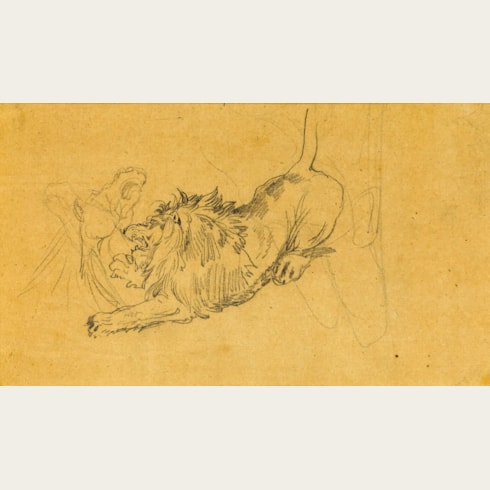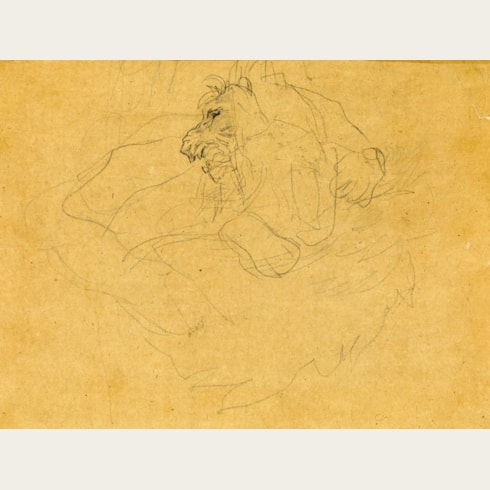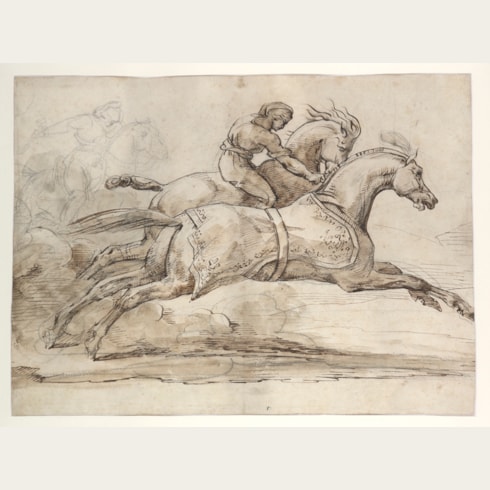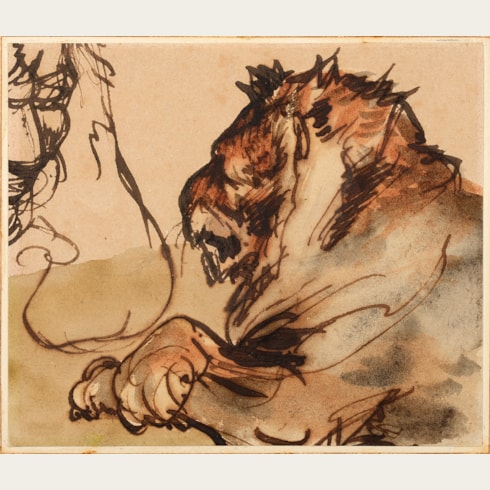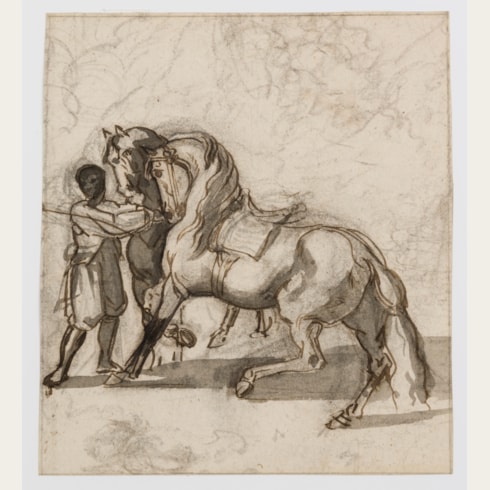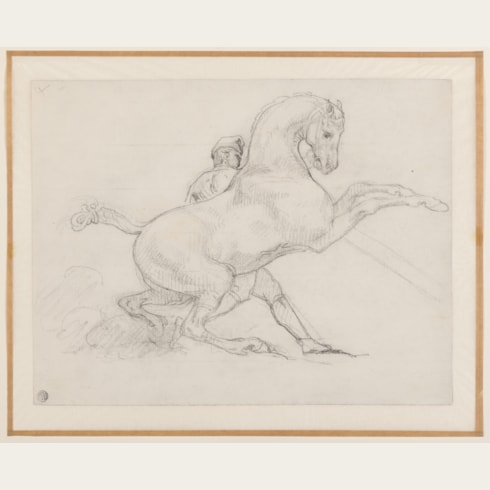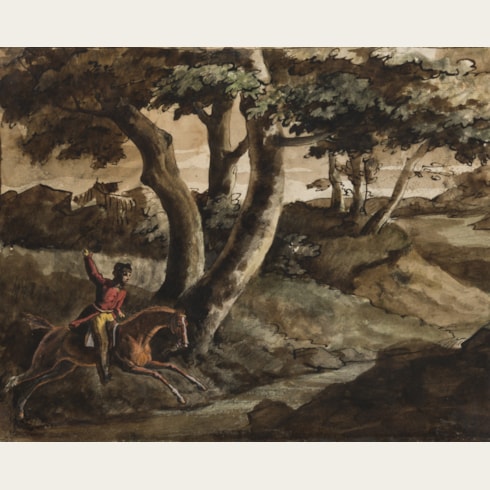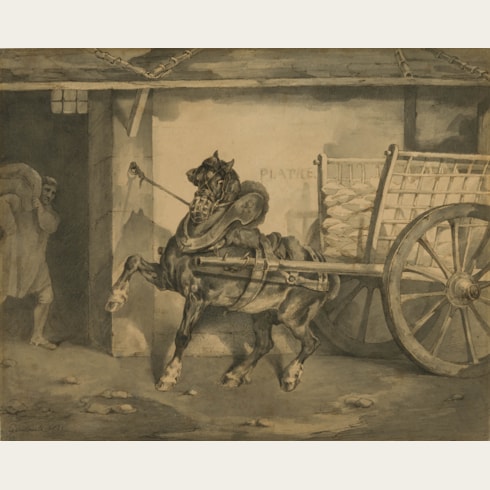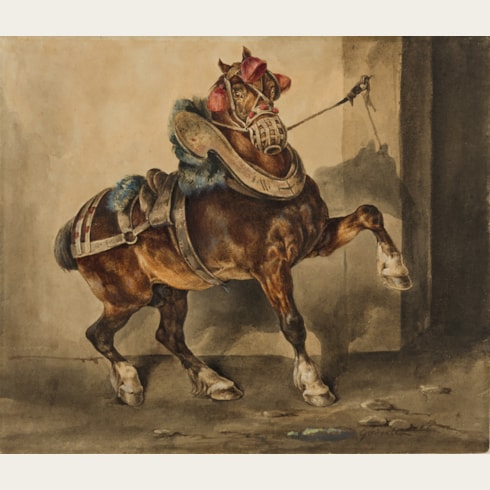Théodore GERICAULT
(Rouen 1791 - Paris 1824)
A Horse Seen from Behind
244 x 295 mm. (9 5/8 x 11 5/8 in.)
The attribution of this fine sheet to Géricault was confirmed in 1999 by the late Lorenz Eitner, who dated it to between 1818 and 1820 and compared it to a pencil study of a horse raising its hind leg, of similar dimensions, which is part of an album of drawings by Géricault in the collection of the Art Institute of Chicago; that drawing is a study for a finished watercolour of Horses Battling in a Stable of c.1820 now in the Cleveland Museum of Art. Also stylistically comparable are two further pencil drawings of horses, datable to c.1818-1819, in the same Chicago album.
As another Géricault scholar, Philippe Grunchec, has written, ‘Quite apart from the simple delight that Géricault took in representing his subjects, we cannot but be impressed by the care with which he distinguished the various species, coats, and postures. In his art the horse ceases to be an abstract entity and becomes an assembly of multiple characteristics that in one variable or another give the animal its identity’, adding that ‘Géricault, before all else, must be credited with giving us a living animal…He must also be credited with having succeeded – without the aid of photography, needless to say – in achieving verisimilitude, if not correctness, in his representation of various gaits, even the most rapid, by rejecting the conventional attitudes…Follow Géricault into the stables where he set up his easel, where he opened his sketchbook, and right away we see that dominant psychology of the horse – his insatiable curiosity!’
Provenance
Anonymous sale (‘The Property of a Collector’), London, Christie’s, 4 July 2000, lot 192 (bt. Hazlitt, Gooden & Fox)
Private collection.
Literature







